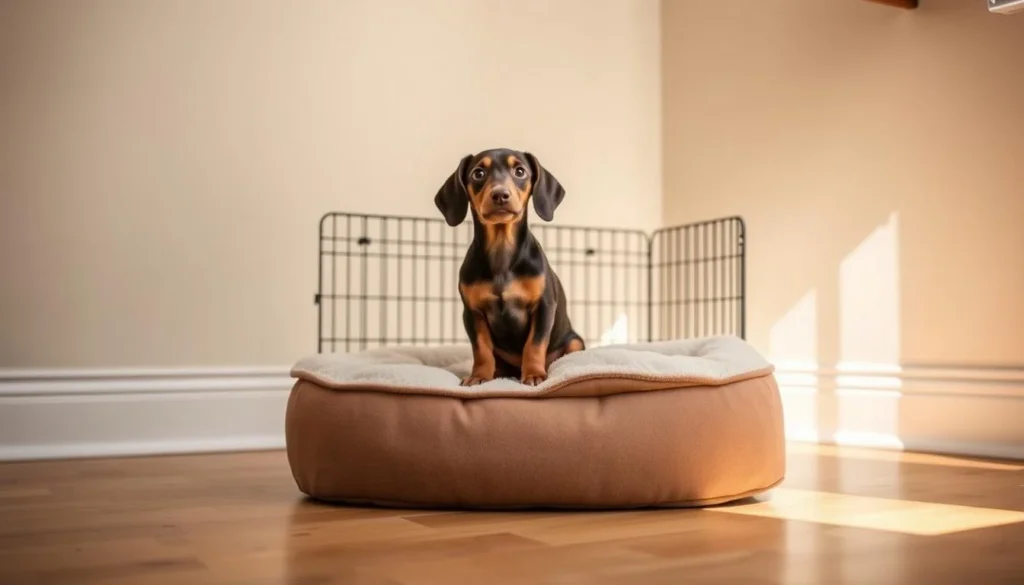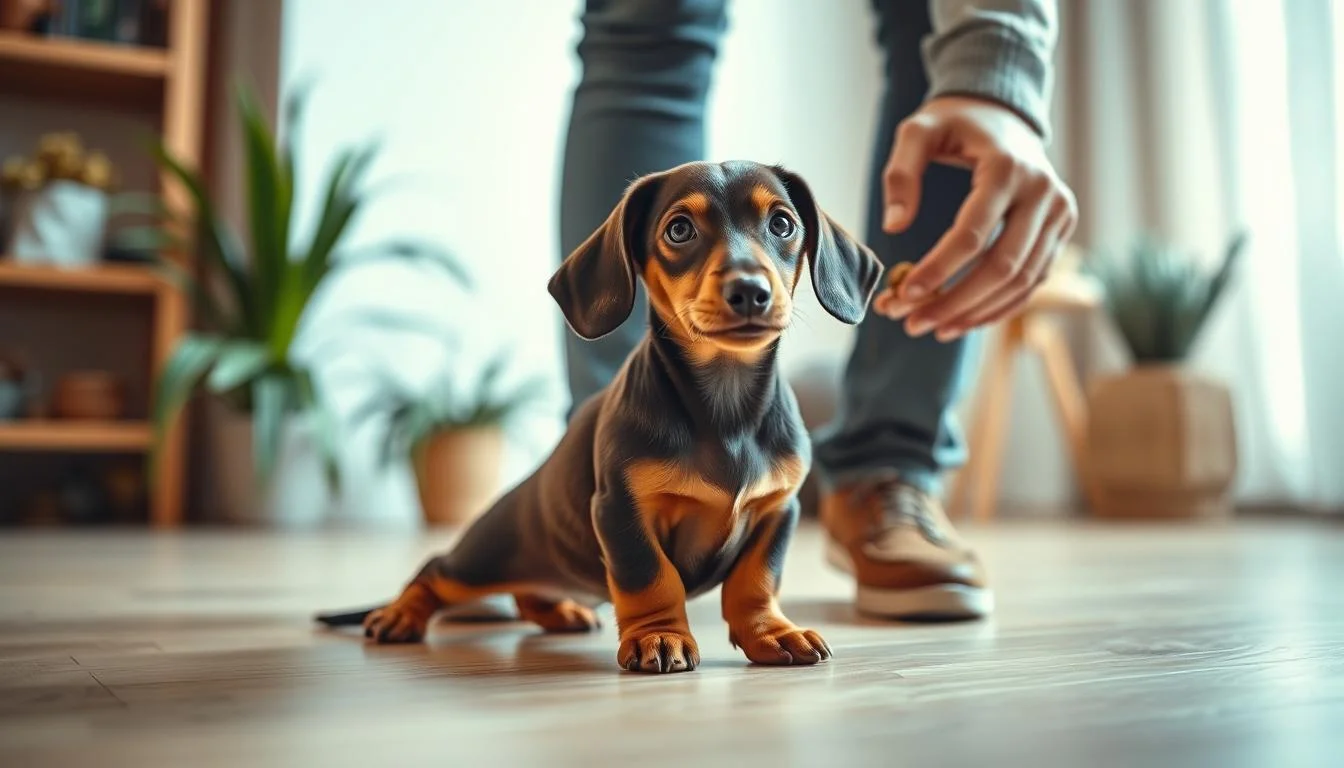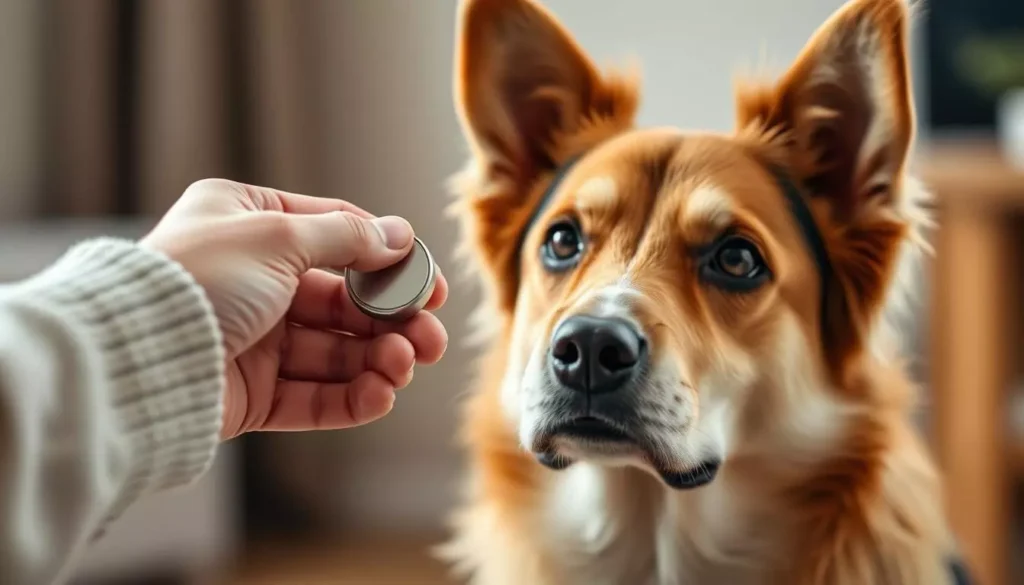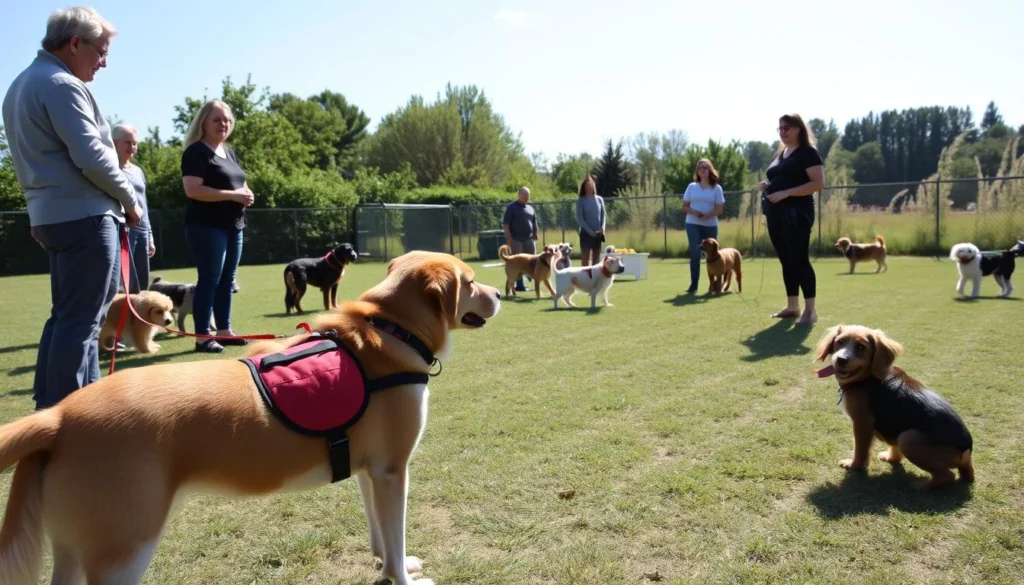Bringing a dachshund puppy home was incredibly heartwarming. The little bundle of joy had adorable floppy ears and a curious spirit. It stole my heart right away.
However, potty training proved to be more challenging than I thought. Dealing with accidents on the floor can be overwhelming. But, with patience and the right tips, I found it's doable. If you're looking to potty train your dachshund puppy, I've got some advice that worked for me.
Key Takeaways
- Consistency is key for successful dachshund puppy potty training.
- Understanding their behavior can help prevent accidents.
- Establishing a routine aids in effective potty training for a dachshund.
- Designate a specific potty spot for familiarity.
- Utilize positive reinforcement to encourage good habits.
- Be patient; every puppy learns at their own pace.
Understanding Dachshund Behavior
Dachshunds are fascinating companions, known for their intelligence and strong will. When I explore dachshund behavior, I find they love to please their owners. But, their stubbornness can make potty training tough.
It's key to understand dachshund temperament to connect with them. They do well in structured environments and early socialization helps with housebreaking. Training them involves using their desire for approval. Praise and rewards speed up their learning.
Watching dachshund puppy habits helps us meet their needs. Noticing their cues helps us know when they need to go. Creating a supportive environment helps them grow confident and well-adjusted.
Signs Your Dachshund Puppy Needs to Go
Knowing when your dachshund puppy needs to go is key for good training. I've learned that noticing the signs my puppy gives can stop many accidents inside. Look out for sniffing, circling, or pacing as if searching for a way out.
When my pup whines or sits by the door, it's a clear sign they need to go. To help with this, I trained my dachshund to ring a bell when it's time to go outside. This way, we can communicate better and respond quickly.

It's important to understand these signs to manage your puppy's needs well. By watching for these behaviors, I can keep my puppy on track with potty training.
Establishing a Potty Training Routine
Creating a structured potty training routine is key for housebreaking my dachshund puppy. A consistent schedule helps avoid accidents indoors. It means taking my pup outside at set times during the day.
Morning, Mealtime, and Evening Schedules
It's vital to include morning, mealtime, and evening routines in my dachshund's schedule. In the mornings, I take my puppy outside right after waking up. After meals, I make sure they go outside too. Regular evening breaks prepare them for bedtime and solidify the routine.
This structured approach makes potty training easier for both of us.
Frequent Bathroom Breaks
Young dachshunds have small bladders, so they need to go out often. I take my puppy outside every one to two hours, based on their needs. This helps them learn when and where to go.
Going to the same spot every time helps them understand where to relieve themselves. It makes training smoother.
The Best Way to Potty Train a Dachshund Puppy
Consistency is crucial when potty training a dachshund puppy. Creating a designated potty area is a great strategy. It helps your puppy learn a routine and connect the area with going to the bathroom.
Every time you take your dachshund to this spot, they'll learn it's their potty area. This makes potty training easier for both of you.
Designating a Potty Spot
Choosing a specific outdoor spot has two benefits. It gives your dachshund a familiar place to go and helps you establish a routine. A structured approach makes it clear what's expected of them.
Using Verbal Commands
Using verbal commands in puppy training improves communication. Say “go potty” every time to teach your puppy when to go. Positive reinforcement, like treats or praise, helps them remember.
This mix of a designated potty area and clear commands is a top potty training method for dachshunds.

Effective Potty Training Techniques
Teaching my dachshund to use the potty is easier with the right methods. Positive reinforcement helps us bond and learn together. Praising my puppy works wonders for their training.
Positive Reinforcement
Positive reinforcement is key. I reward my dachshund right after they use the potty. Treats, playtime, or praise do the trick. It makes learning fun and reinforces good behavior.
Praise Over Punishment
Praising my puppy is better than punishing them. It boosts their confidence and makes them want to learn more. Punishment can make them scared and slow down learning. Positive training creates a supportive learning space.
Importance of Crate Training
Crate training has many crate training benefits for dachshund puppies. It gives them a safe, cozy spot to relax and feel safe. Puppies naturally don't want to mess their sleeping area. Using the right dachshund crate training methods helps my puppy love their crate and learn to go potty outside.
The importance of a crate in potty training is huge. A crate helps set a routine, making it easier to know when my puppy needs to go. It's key to make sure my puppy feels at home in their crate but also gets to go outside often. This balance helps avoid accidents and makes training easier.

In short, crate training is both comfortable and useful. It helps my dachshund learn good habits while feeling safe. Knowing how to use a crate well can make potty training a success.
Housebreaking Methods for Dachshund Puppies
Playpens are great for training dachshund puppies. They create a safe space and help with housebreaking. This method is very effective because it limits the puppy's area.
Playpens are not just safe. They also help with potty training. This is because they reduce the chance of accidents.
Using Playpens Effectively
Using playpens for training dachshunds can really help. Here are some tips to make it work:
- Put the playpen in a quiet spot where your puppy can play and relax.
- Have a special potty area in the playpen to help your puppy learn.
- Take your puppy outside often to teach them to go potty there.
- Watch how long your puppy is in the playpen. Make sure they don't get lonely. Use positive rewards to help.
By following these tips, your dachshund will learn to love their playpen. They'll also know where to go potty. This makes training easier and more successful.
Common Challenges in Dachshund Potty Training
Potty training dachshunds can be tough. Their stubbornness often leads to common housebreaking issues. These problems can make even the most patient owners frustrated.
For example, I sometimes find that my dachshund doesn't finish going outside. It's puzzling. Other times, he just won't go outside because he's too distracted.
Consistent reinforcement is crucial in overcoming these challenges. I keep a positive atmosphere, focusing on encouraging my pup. This approach helps me stay calm and focused.
Regularly checking our training routine is also important. It helps me make the necessary changes. This ensures that I effectively address these challenges.
Maintaining Consistency During Training
Building a strong foundation for your dachshund's potty training is key. Being consistent in training helps your puppy feel secure. A regular potty schedule helps your pet learn where to go.
Keeping a Regular Schedule
Sticking to a potty schedule is vital for good training. Taking your puppy out at the same times every day helps them know when it's time. I suggest taking them out after meals, play, and naps.
By watching your puppy's bathroom habits, you can spot any changes. This helps you adjust the schedule as needed.
Reducing Accidents Inside the Home
Accidents happen, but they're part of learning. To cut down on them, clean up messes right away. This stops your puppy from going back to the same spot.
When your puppy goes outside correctly, praise them. This encourages them to use the right places. Being consistent and watching your puppy's habits will help a lot.
Socialization and Its Impact on Training
Socialization is key for dachshunds. Early exposure to different places, people, and animals shapes their behavior. It boosts their confidence and helps them feel calm during training.
When my dachshund meets new things, it helps with training. A well-socialized dog stays focused and learns better. This makes training easier and more effective.
Socialization and potty training are closely linked. Taking my puppy to new places while teaching them to go potty outside has helped a lot. A confident puppy is more eager to learn, leading to fewer accidents inside.
Conclusion
Training a dachshund puppy to use the potty is a rewarding journey. It needs patience and a good plan. I learned how important it is to understand their behavior and know when they need to go outside.
By sticking to a routine, I set the stage for a well-trained and happy pet. This journey is filled with moments that make it all worth it.
In my experience, positive reinforcement and praise are crucial. They help in training and strengthen the bond with my puppy. Housebreaking can be tough, but it's part of the joy of having a pet.
Looking back, I see that consistency, love, and understanding are key. With dedication and the right approach, any dog owner can have a well-trained pet. It's a dream that can come true.




